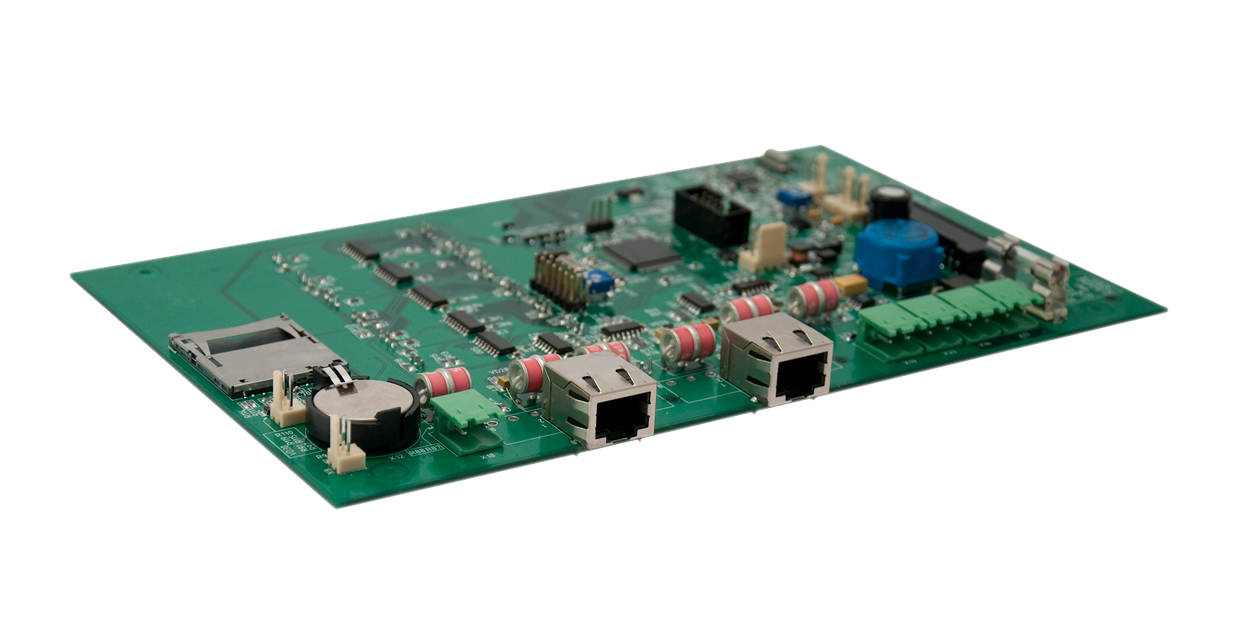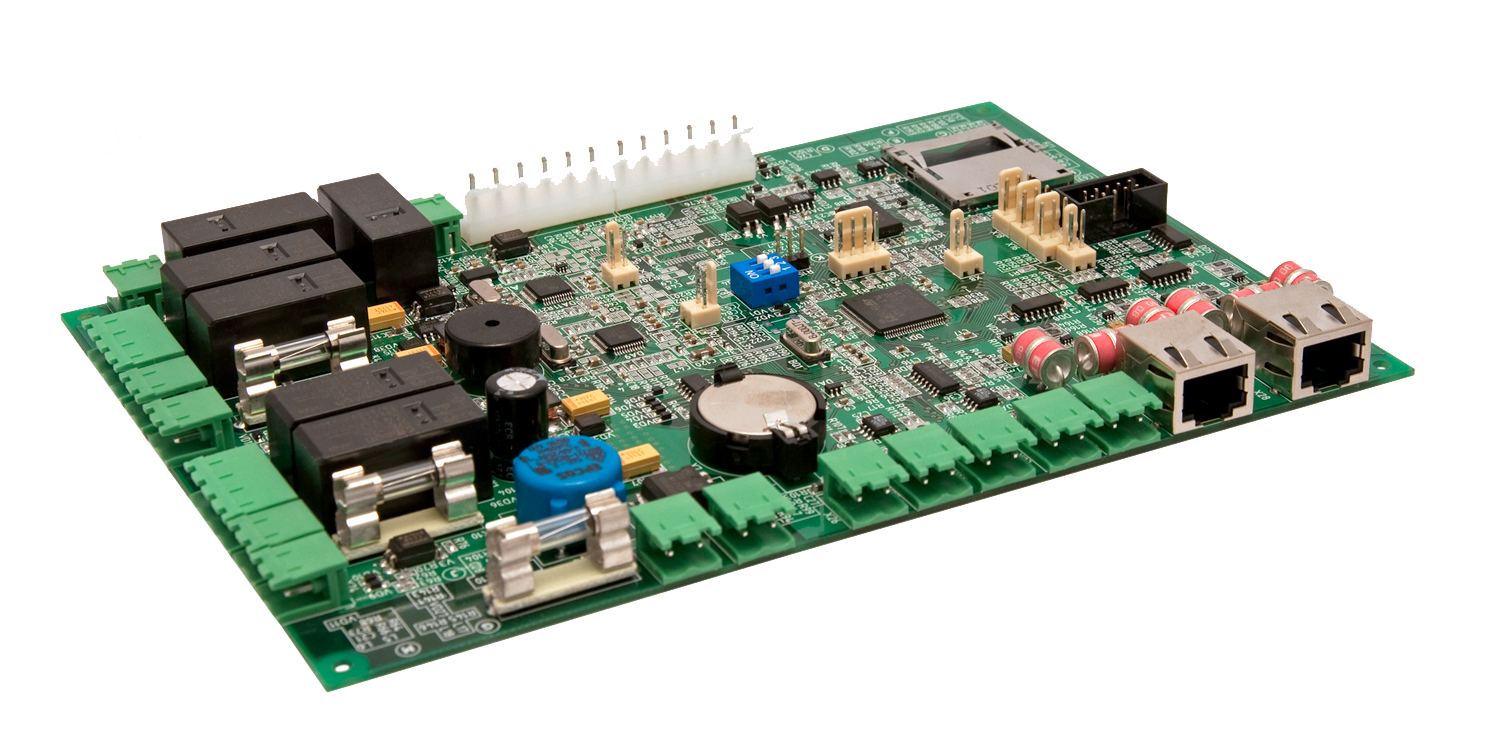Customer
A manufacturer and distributor of electronic fire and burglar alarms and security systems.
Objective
Development of a fire voice notification and evacuation control system designed to notify people in case of an emergency, as well as to transmit information messages and background music from a microphone console.
Basic requirements for the notification system:
- Modular design, up to 16 independent notification zones
- Flexible construction of notification algorithms (up to 16)
- Automatic and manual start of notification algorithms
- Control of light, sound and combined alarms
- Recording, storage and playback of alarm and evacuation messages
- Frequency of voice messages within a range of 150-15 kHz, digital data with a bit rate of 16 bit. The system provides high-quality transmission of background music, as well as information and voice messages
- Autoplay of different messages to different notification zones. Up to three messages with a total duration of 5 min are used for each zone
- Linear or circular structure of an information exchange system. In case of line interruption or short circuit, information exchange is carried out in two directions
- The transmission interface should allow for data transfer over a distance of 800 meters without a repeater
- Transmission of signals from a microphone and an external audio input source to any notification zone
- Monitoring all input and output lines, communication lines, as well as remote power sources
- Logging all events occurring in the system
- System configuration and diagnostics using special software on the PC
1. Solution
Solution description:
- Collected requirements, as well as terms of reference
- Microphone console and address module equipment
- Embedded software for devices
- Structural design
- Business logic implementation
- Debugging software
2. Product concept
The basic modules of the voice notification system are the microphone console (MC) and the address module (AM).
The MC performs the following functions in the system:
- collecting information from the AM (up to 8 items)
- AM control using designed notification algorithms
- Automatic control of connecting lines
- Transmission of voice messages from the microphone and the linear input to a selected zone(s)
- Status indication of all components and units in the system

The AM is responsible for enabling the specified control lines and transmitting alarm and evacuation messages to notification zones, based on control signals from the MC or the Fire Control and Indicating Panel (FCIP) in free-running mode. Each AM controls two notification zones and has two alarm inputs connected to the FCIP for automatic launch of notification algorithms.

3. Hardware design
The STM32F103 based on the Cortex-M3 by STMicroelectronics was selected as a controlling microcontroller for both modules. The discrete audio codec VS1053 VLSI Solution was selected for audio encoding/decoding.
Two information exchange lines, the RS485 and the RS422, were used for transmission of audio data and control commands, respectively.
The system modules include the following components:
- real-time clock for time fixing of events in the system
- SD / MMC memory card for storing an log of events, alarm and data messages
- Tamper sensor
- Film keyboard for easy control of the system with an MC operator
- LED indicator matrix for displaying the system status on the MC
4. Software development
The developed software was implemented using the FreeRTOS real-time operating system. The implemented drivers include drivers for an audio codec, a matrix keypad, LED indication, iButton access devices, a speaker and a real-time clock. The real-time clock driver was additionally fitted with automatic adjustment which ensures high clock rate accuracy, regardless of clock quartz frequency accuracy.
The Modbus protocol was used to enable information exchange between the MC and the AM. Full business logic of module operation was implemented in the design. In addition, the function of configuration through external software was added to the system.
The system was fitted with the option of logging events with system time fixing. The latest 999 system events are saved with automatic replacement of older events. The events log is saved on an SD card and can be read using MC configuring software.
FAT16 support was implemented to store alarm and data message files on an SD card, as well as record them through standard means.
Audio transmission / reception was implemented using DMA channels, which helped reduce the load on the controlling microcontroller. In addition, cyclic buffers were used for uninterrupted stream broadcasting of background music on the transmitting side (MC) and the receiving side (AM).
The VS1053 audio codec driver implements the function of uploading plug-ins for decoding (playback) and encoding (recording) for two audio stream profiles: the music profile, with a sampling frequency of 44,100 Hz and an average bit rate of about 80 kb/sec; and the microphone profile, 1,600 Hz and about 30 kb/sec. This bit rate enables audio data transmission through the RS485 line at a transmission speed of 115,200 baud.
In addition, the system was fitted with the function of sampling frequency automatic adjustment to smooth mal-synchronization between the decoding codec and the encoding codec.
The MC is designed to save up to 16 various algorithms that describe system behavior in case of an alarm. These algorithms are saved in the microcontroller flash memory. They may be configured using special software. Moreover, the AM can operate in free-running mode in which it can execute up to two alarm algorithms in case of disconnection with the MC.
To control connected audio lines, the system uses a circuit sensitive to change in total power by 1 Watt in the range between 5 and 160 Watt.
The system also features control functions for all external lines including data transfer lines, as well as sound signaling and LED indication in case of malfunction.
5. Certification
The fire voice notification system has been successfully certified for compliance with the GOST standards for electromagnetic safety, humidity and dust resistance, as well as noise immunity to nano- and microimpulses.
Advantages
- System scalability
- Digital audio transmission
- Interblock connection integrity control
- Reduced cost
